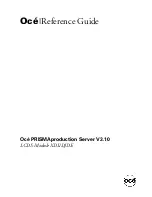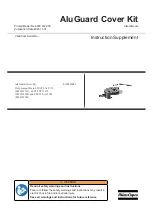
Battery Maintenance
2240 SRM 1
Troubleshooting Charger
Battery chargers normally operate automatically
without constant attention. It is necessary to make
a periodic check that the charger is operating cor-
rectly. Check for the following conditions:
1.
Battery temperature is too high. The temper-
ature in a battery will not normally rise more
than 14 C (25
F)
during an 8-hour charging pe-
riod. Higher temperatures indicate the charging
rate needs adjustment.
2.
Continuous operation of the charger. Check the
automatic controls on the charger. Check the
charging rate. A low charging rate can be the
problem.
3.
Continuous operation of a charger at a high rate.
Normally, the charging rate begins at a high rate
and decreases as the battery becomes charged.
If the rate does not decrease, the controls need
repair or adjustment.
Knowing When Battery Is Fully Charged
WARNING
Always connect the positive cable to the pos-
itive terminal and connect the negative cable
to the negative terminal. Any other connection
will cause injury and damage.
Always charge the battery at the end of the
work period (shift).
Never let the specific
gravity decrease to a level less than the limits
shown in the manual.
Always de-energize the charger before you con-
nect or disconnect the charger from the bat-
tery.
NEVER connect the battery charger plug to
the plug of the lift truck. You can damage the
traction control circuit. Make sure the charger
voltage is the correct voltage for the battery.
1.
During charging, the voltage increases slowly.
When the battery is fully charged, the voltage
level is constant.
2.
Remove a vent cap and look in the opening. If
you see bubbles in the electrolyte, the battery is
either fully charged or in the final stage of charg-
ing.
3.
The specific gravity reading is constant and
within the limits of a charged battery. If the tem-
perature increases after the battery is charged,
the specific gravity will decrease a small amount.
4.
Constant meter indications on the charger will
indicate the end of the charging cycle.
WHERE TO CHARGE BATTERIES
To increase the service life and reduce maintenance,
a special area is needed for charging the batteries.
The following information is necessary for the design
of this area:
• Location of power supply
• Ventilation; hydrogen gas comes from the batteries
during charging
• Drains for cleaning the batteries
• Type and size of the batteries
• Type of lift trucks
• Distances the lift trucks must travel for service
• Safety regulations and instructions
Equipment Needed
• A lifting device to remove the battery from the lift
truck
• Racks to hold the batteries during charging and
storage (these racks must be made of wood or must
not be metal; metal racks that are covered with an
insulating material can be used)
• A battery charger that will charge your batteries
• Tools for maintenance
• An area with a drain for cleaning batteries and bat-
tery compartments
• Distilled water
• Air and water supplies for cleaning
• Maintenance records (see Figure 11 and Figure 12)
• A workbench
• Spare parts and repair equipment
• Protective clothing and safety equipment for han-
dling batteries
• Water source for washing eyes and preventing acid
burns
• Install a NO SMOKING sign in the service area
• Keep the charger in a clean, dry area with good
ventilation
14





































